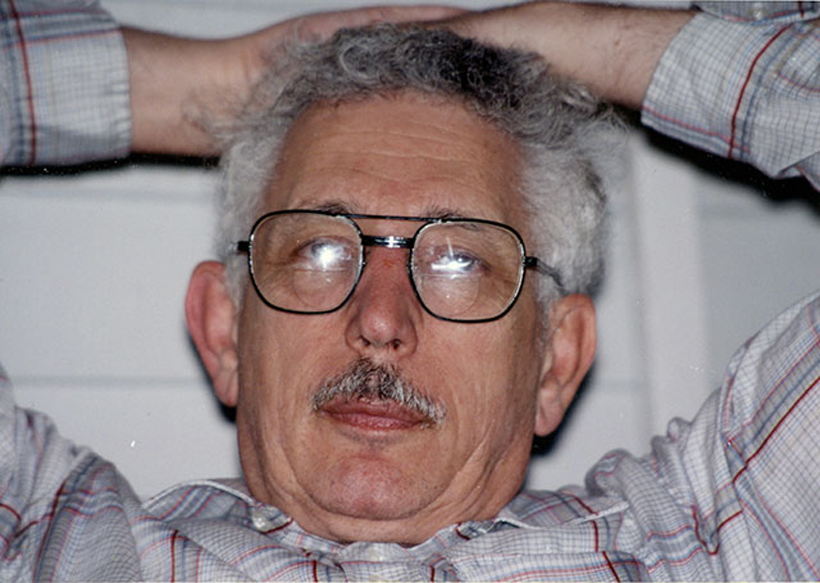Philip Pushes The Button [1]
PHILIP BROCKMAN
Rocket Scientist
1937 - 2017
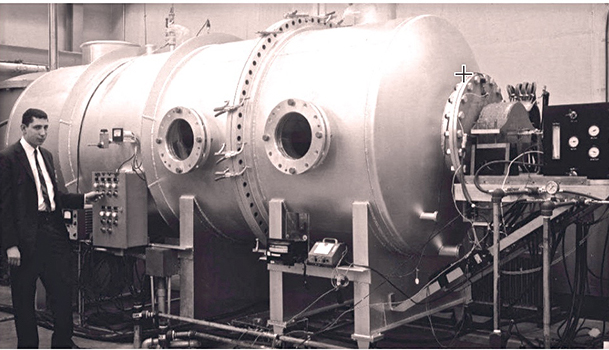
Research physicist Philip Brockman pushes the button to start NASA's
MPD-arc plasma accelerator in December 1964 [2] (NASA), Fred Jones
"While the Hydrodynamics Division sank at Langley, a few new research fields bobbed to the surface to become potent forces in the intellectual life of the laboratory. Most notable of these was magnetoplasmadynamics (MPD)-a genuine product of the space age and an esoteric field of scientific research for an engineering-and applications-oriented place like Langley. If any 'mad scientists' were working at Langley in the 1960s, they were the plasma physicists, nuclear fusion enthusiasts, and space-phenomena researchers found in the intense and, for a while, rather glamourous little group investigating MPD. No group of researchers in NASA moved farther away from classical aerodynamics or from the NACA's traditional focus on the problems of airplanes winging their way through the clouds than those involved with MPD."
— James R. Hansen, from "The Mad Scientists of MPD" in Spaceflight Revolution: NASA Langley Research Center From Sputnik to Apollo
PHILIP PUSHES THE BUTTON
In 1958, the Eisenhower administration, shocked by the 1957 launch of Sputnik, established NASA to be responsible for the civilian space program, as well as aeronautics and aerospace research. NASA absorbed the National Advisory Committee for Aeronautics (NACA), the Langley Aeronautical Laboratory in Hampton, Virginia, the Ames Aeronautical Laboratory in Moffett Field in Silicon Valley, and the Jet Propulsion Laboratory, operated by Caltech.
Philip Brockman was fortunate to arrive at the renamed Langley Research Center in 1959 as part of the first group of newly recruited NASA employees hired to lead the effort to meet the challenge of the 1957 launch of Sputnik. His interest was in the magnetoplasmadynamics (MPD) thruster, considered up until that time to be in the realm of science fiction. The MPD played a major role in reshaping the focus of NASA’s space program, and it is currently the most powerful form of electromagnetic propulsion.
He was a member of the small team of scientists characterized as "The Mad Scientists of MPD" [3] by James R. Hansen in Spaceflight Revolution: NASA Langley Research Center From Sputnik to Apollo [4]. The efforts of these unsung science heroes were critical to the success of Project Mercury, the first human spaceflight program of the United States that put American astronauts in space, beginning with the first suborbital flight by Alan Shepard and the first orbital flight by John Glenn, and to all human space exploration thereafter.
In 1997, he was awarded the NASA Exceptional Service Medal (ESM) "for outstanding contributions and exceptional service in the development of NASA's laser remote sensing technology and capability".
In 2000, he received the following commendation from NASA in recognition of his 40 years of outstanding Service to NASA and the Public:
A native Bostonian, Mr. Philip Brockman came to NASA Langley Research Center in 1959 to study the physics of rocket reentry using shock tubes. He moved on to help develop Hall current plasma propulsion for space travel. When U.S. funding for Hall plasma propulsion dried up, in the mid-'60s, Phil reinvented himself as a laser scientist, performing spectroscopy of atmospheric molecules.
From that time on, Phil has been involved with lasers. He has worked with every kind of laser possible, from liquid, to gas, to solid-state lasers; Mr. Brockman has done it all.
His most recent and perhaps most outstanding contributions have been in the area of airport terminal area productivity and aircraft safety. For the past five years, Phil has been the technical lead for the NASA Wake Vortex Lidar system which is part of the joint NASA/FAA Aircraft Vortex Spacing System designed to safely decrease the time between aircraft landings and take-offs on commercial and military runways. (This has become very important work with the ever increasing number of air travelers demanding more flights and the limited number of runways at major airports that have run out of room for expansion.)
Mr. Brockman has successfully demonstrated the capability of the Wake Vortex Lidar to measure large vortices and their dissipation at major airports including, Dallas-Ft. Worth and John F. Kennedy airports. Phil also serves as a "defacto" mentor to many of the younger employees in SEC and is forever a wonder, because he can dig up pertinent information for them, on any far-out technical topic that they can dream up. Philip Brockman is one of the original "NASA can do people" and he continues to be that after 40 years of outstanding Service to NASA and the Public.
He was a research physicist at NASA Langley Research Center for his entire 43-year career, from 1959 until his retirement in 2003. (See: Technical Papers [5].)
Evidence of his successful legacy is the following air travel safety graph, which appears in the forthcoming Enlightenment Now by Steven Pinker.
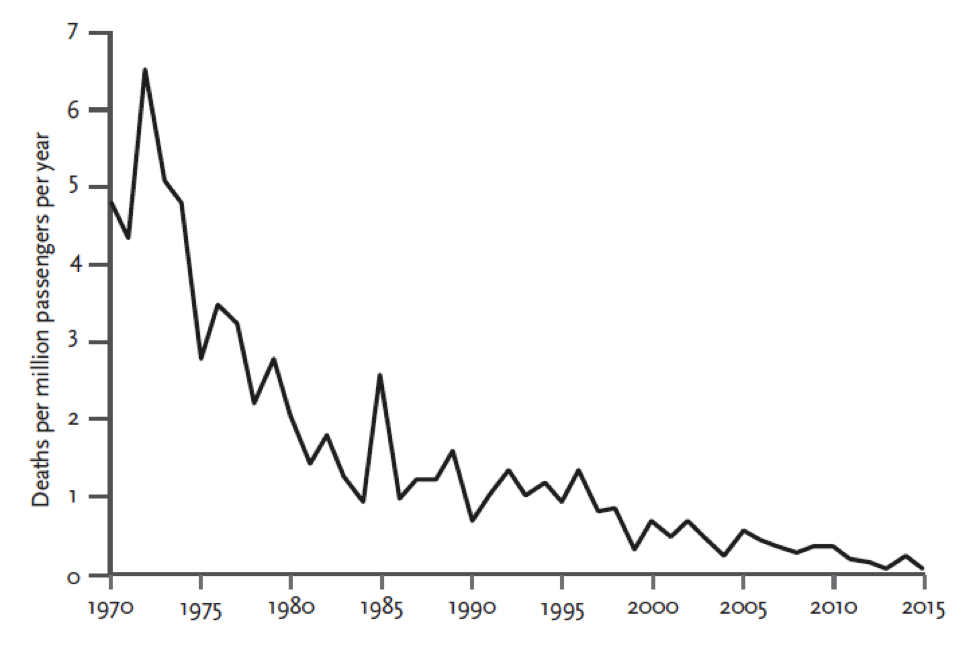
Philip Brockman, my older brother, was born in Boston on November 28, 1937 and died in Raleigh, North Carolina on August 27, 2017.
I began a true rocket scientist.
At the end I conducted research toward making aircraft safer for us all.
I am a man of wind and light.
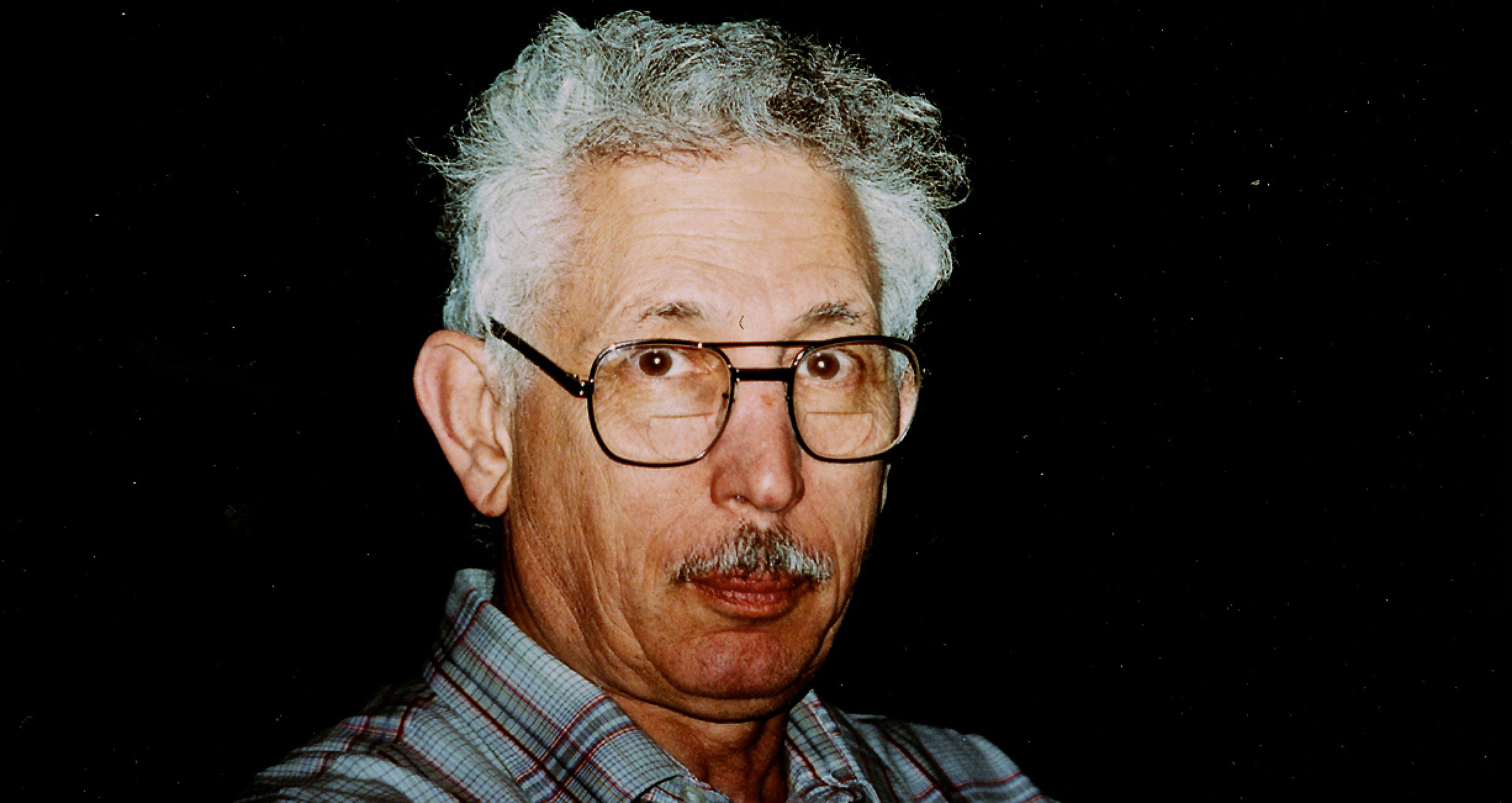

NASA Langley's shy 'mad scientist' dies
By Mike Holtzclaw [September 3, 2017]
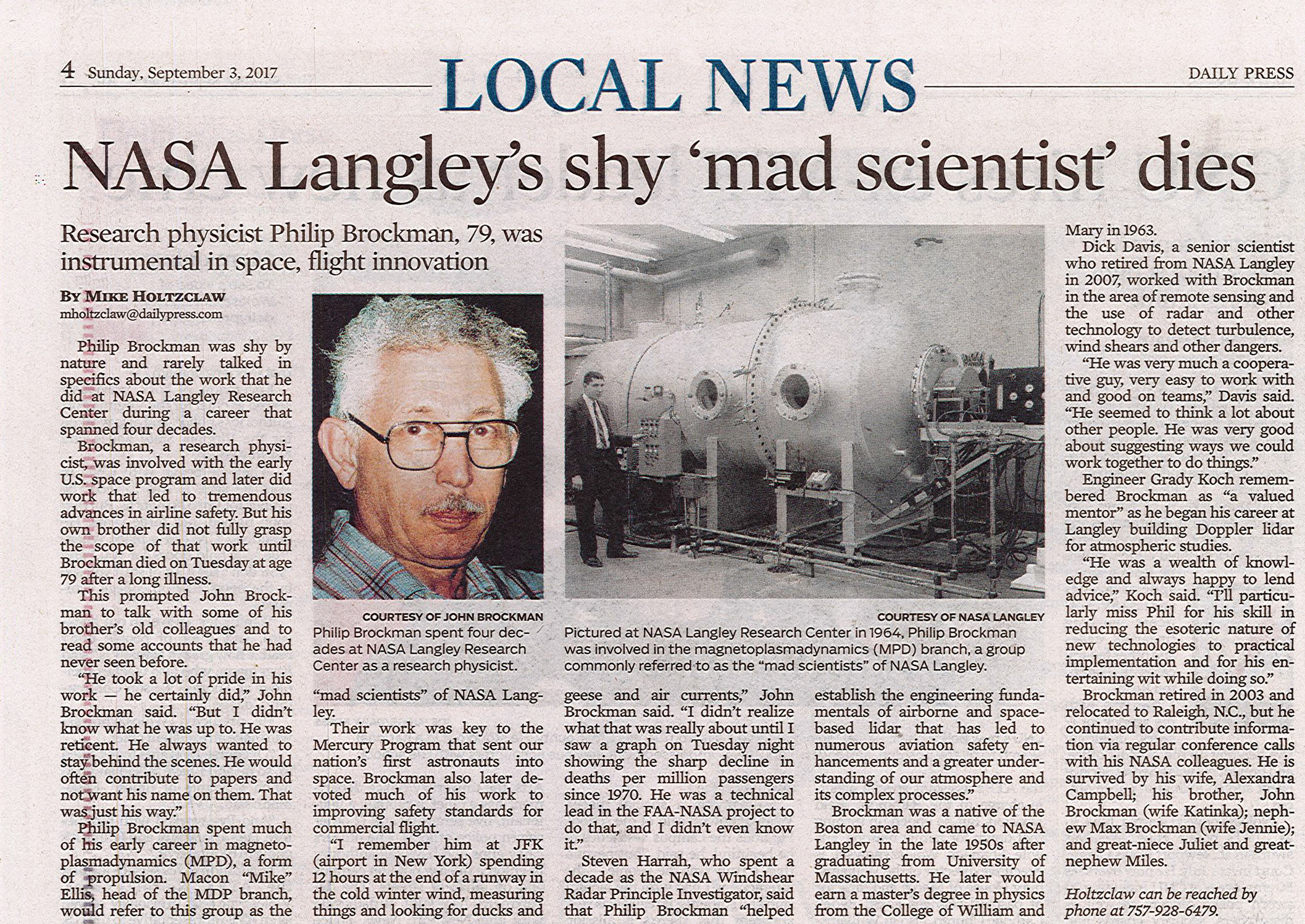
Philip Brockman was shy by nature and rarely talked in specifics about the work that he did at NASA Langley Research Center during a career that spanned four decades.
Brockman, a research physicist, was involved with the early U.S. space program and later did work that led to tremendous advances in airline safety. But his own brother did not fully grasp the scope of that work until Brockman died on Tuesday at age 79 after a long illness.
This prompted John Brockman to talk with some of his brother’s old colleagues and to read some accounts that he had never seen before.
“He took a lot of pride in his work — he certainly did,” John Brockman said. “But I didn’t know what he was up to. He was reticent. He always wanted to stay behind the scenes. He would often contribute to papers and not want his name on them. That was just his way.”
Philip Brockman spent much of his early career in magnetoplasmadynamics (MPD), a form of propulsion. Macon “Mike” Ellis, head of the MDP branch, would refer to this group as the “mad scientists” of NASA Langley.
Their work was key to the Mercury Program that sent our nation’s first astronauts into space. Brockman also later devoted much of his work to improving safety standards for commercial flight.
“I remember him at JFK (airport in New York) spending 12 hours at the end of a runway in the cold winter wind, measuring things and looking for ducks and geese and air currents,” John Brockman said. “I didn’t realize what that was really about until I saw a graph on Tuesday night showing the sharp decline in deaths per million passengers since 1970. He was a technical lead in the FAA-NASA project to do that, and I didn’t even know it.”
Steven Harrah, who spent a decade as the NASA Windshear Radar Principle Investigator, said that Philip Brockman “helped establish the engineering fundamentals of airborne and space-based lidar that has led to numerous aviation safety enhancements and a greater understanding of our atmosphere and its complex processes.”
Brockman was a native of the Boston area and came to NASA Langley in the late 1950s after graduating from University of Massachusetts. He later would earn a master’s degree in physics from the College of William and Mary in 1963.
Dick Davis, a senior scientist who retired from NASA Langley in 2007, worked with Brockman in the area of remote sensing and the use of radar and other technology to detect turbulence, wind shears and other dangers.
“He was very much a cooperative guy, very easy to work with and good on teams,” Davis said. ”He seemed to think a lot about other people. He was very good about suggesting ways we could work together to do things.”
Engineer Grady Koch remembered Brockman as “a valued mentor” as he began his career at Langley building Doppler lidar for atmospheric studies.
“He was a wealth of knowledge and always happy to lend advice,” Koch said. “I’ll particularly miss Phil for his skill in reducing the esoteric nature of new technologies to practical implementation and for his entertaining wit while doing so.”
Brockman retired in 2003 and relocated to Raleigh, N.C., but he continued to contribute information via regular conference calls with his NASA colleagues. He is survived by his wife, Alexandra Campbell; his brother, John Brockman (wife Katinka); nephew Max Brockman (wife Jennie); and great-niece Juliet and great-nephew Miles.
Further reading about NASA's Langley Research Center:
The Unknown and Impossible: How a Research Facility in Virginia Mastered the Air and Conquered Space [6] by Tamara Dietrich, Mark St. John Erickson, Mike Holtzclaw
Spaceflight Revolution: NASA Langley Research Center From Sputnik to Apollo [7] by James R. Hansen

